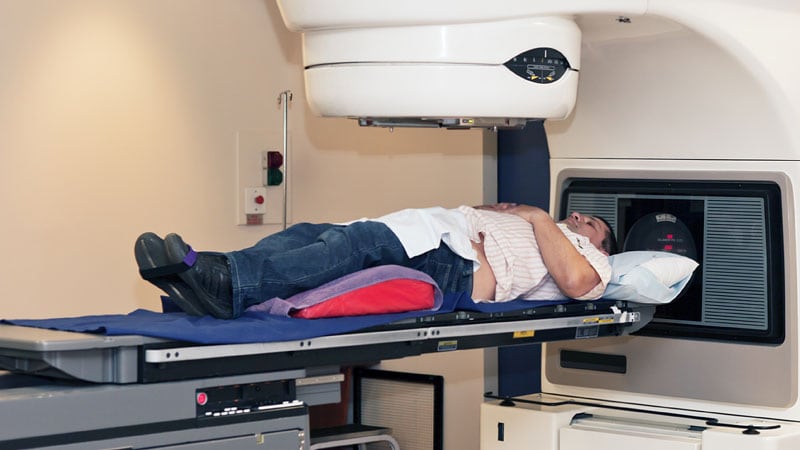Short-Course SBRT: New Standard of Care for Prostate Cancer
Core Concepts
SBRT is a new standard of care for low and favorable intermediate-risk prostate cancer.
Abstract
The study presents data from the phase 3 randomized PACE-B trial, comparing the efficacy of stereotactic body radiation therapy (SBRT) with conventional external-beam radiation therapy for prostate cancer. Key highlights include:
SBRT offers 5-year disease control comparable to conventional radiation therapy.
Similar event-free survival rates and low toxicity in both groups support SBRT as a new standard of care.
Careful attention to technique is crucial for achieving desired results with SBRT.
The trial enrolled 874 patients and showed noninferiority of SBRT in terms of biochemical clinical failure.
Toxicity rates were low in both study arms, with minimal urogenital and gastrointestinal side effects.
The study emphasizes the need for US clinicians to catch up with the adoption of ultra-hypofractionated radiation like SBRT.
Short-Course SBRT: Standard of Care in Prostate Cancer?
Stats
Overall, the 5-year event-free survival rates were 95.8% for SBRT and 94.6% for conventional radiation.
The rate of grade 2 or greater urogenital side effects at 5 years was 5.5% in the SBRT arm and 3.2% in the conventional therapy arm.
Quotes
"I think we can also say now with a high level of confidence that SBRT can be considered a new standard of care for low and favorable intermediate-risk prostate cancer." - Nicholas van As
Key Insights Distilled From
by Neil Osterwe... at www.medscape.com 10-04-2023
https://www.medscape.com/viewarticle/997078
Deeper Inquiries
How can the adoption of SBRT be accelerated in clinical practice?
The adoption of SBRT can be accelerated in clinical practice through several key strategies. Firstly, increasing education and training for radiation oncologists and healthcare providers on the technique and benefits of SBRT is crucial. This can help build confidence in utilizing SBRT for prostate cancer treatment. Additionally, establishing clear guidelines and protocols for SBRT implementation can streamline the process and ensure consistency in treatment delivery. Collaborating with professional societies and organizations to promote the evidence supporting SBRT as a standard of care for prostate cancer can also help drive adoption. Finally, conducting further research and clinical trials to continue demonstrating the efficacy and safety of SBRT compared to conventional radiation therapy can further solidify its position as a preferred treatment option.
What challenges might arise in implementing SBRT as a standard of care for prostate cancer?
Despite the benefits of SBRT, several challenges may arise in implementing it as a standard of care for prostate cancer. One significant challenge is the need for specialized training and expertise in delivering SBRT, as it requires careful attention to technique to achieve optimal results. Ensuring that healthcare providers have the necessary skills and resources to perform SBRT safely and effectively is essential. Additionally, there may be logistical challenges in terms of equipment availability and treatment capacity, especially in smaller healthcare facilities. Addressing reimbursement issues and insurance coverage for SBRT treatments can also be a barrier to widespread adoption. Finally, overcoming resistance to change and traditional treatment paradigms within the medical community may pose challenges in transitioning to SBRT as the standard of care for prostate cancer.
How can the findings of this study impact the future of radiation therapy for other types of cancer?
The findings of the PACE-B trial demonstrating the efficacy and safety of SBRT for prostate cancer have the potential to significantly impact the future of radiation therapy for other types of cancer. Firstly, the success of SBRT in prostate cancer may pave the way for exploring its use in other cancer types, potentially expanding the range of indications for this treatment modality. The emphasis on delivering larger radiation fractions over a shorter time period seen in SBRT may influence treatment approaches for other cancers, leading to more convenient and cost-effective options for patients. Additionally, the emphasis on quality assurance and standardization of techniques in the PACE-B trial can serve as a model for future research and implementation of advanced radiation therapy techniques in other cancer types. Overall, the findings of this study may catalyze a shift towards more personalized, precise, and efficient radiation therapy approaches across various cancer types.
0
